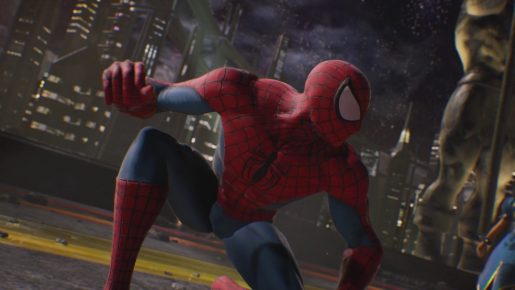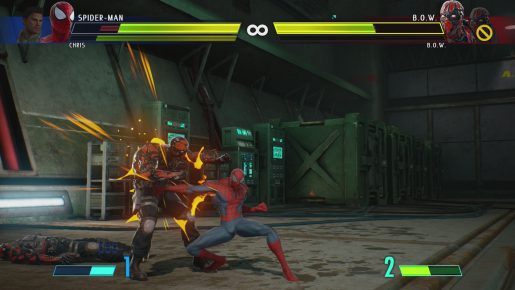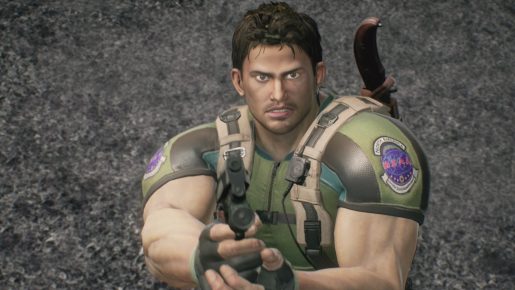Crossover fighters can be a lot of fun, as they’re a great way to showcase various characters. With the upcoming Black Panther movie, insane popularity of Guardians of the Galaxy and standards like Ryu, Strider and Morrigan, there is a lot to be excited for. However, with a smaller roster, questionable choices and increased focus on casual players, is Marvel vs Capcom: Infinite a must or does it fail to make a satisfying experience for anyone?
Marvel vs Capcom: Infinite starts by skipping the whole confusion caused by worlds coming together. Taking place a couple months after the initial convergence, both sides know one another and are working together to stop Ultron Sigma. After you get over the initial shock of starting in the middle of heated conflict, the story feels like something out of a Marvel comic.
To defeat Ultron Sigma they need to collect the remaining power stones, scattered to various locations, resulting in a fun adventure. Like most stories, things eventually take a turn for the worse, some things aren’t what they seem, there is a climatic finish and more to look forward to, even if the story is on the short side.
Upon finishing the story there are a variety of other modes to try. These include online, offline, arcade, training and missions. Online and offline are your standard PVP or player versus CPU mode, where skilled players will be spending the bulk of time. For everyone else there is arcade.
Unfortunately, arcade is a more traditional fighting game mode, where you fight a couple enemies, then the boss and then another boss. Finishing the mode doesn’t unlock a special ending, story or even a score. Just a thanks for playing, credits and then a screen indication the titles for the characters you selected were unlocked. Beating it with one character will unlock both, so that will save you some time/effort in the future.
For newcomers, mission mode is going to be a great resource. The mode starts with a brief introduction to the mechanics in Marvel vs Capcom: Infinite. At first they’re almost insultingly simple, like moving in a direction, but eventually includes an explanation of how to use the infinity stones, block and more.
Those looking to improve their game have the character specific challenges, which are 10 tasks of various difficulty that focus on teaching helpful combos. These start easy, like performing a special attack or a simple routine, but eventually become quite difficult, include 30+ hits, switching characters and using hyper attacks.
Even without using the missions, something that is invaluable if you’re new to the genre or need some extra help, the gameplay is very accessible, at least on the low tier side. By repeatedly pushing light punch, players can use a preprogramed combo that looks nice, does decent damage and makes things easier than learning them. There is also an easy hyper attack, giving players the option to combo into that or simply swap between characters and do their easy combo.
From there, infinity stones feel more like a party mechanic than something that adds a welcomed element to the game. One gives hyper energy, another locks the other player in a box, with yet another increasing attack power. By using these at the right time, it can result in a comeback or possibly even a come from behind win. This makes it a little more accessible, while also giving skilled players a new way to try and come back. Some of the stones normal powers also open up various gameplay options, making for an interesting experience.
Verdict
Overall, Marvel vs Capcom: Infinite is just a decent fighter. The easy mechanics are nice, but don’t add enough to stand out and aren’t quite as good as other games. Swapping makes fights faster, which is nice, though infinity stones simply make the it feels less competitive. Combine this with a rather generic story, forgettable arcade, odd roster (no X-Men) and bad models and you have a fighter that appeals to more casual players, but likely not what professional/fans are looking for.
[Editor’s Note: Marvel vs Capcom: Infinite was reviewed on PS4 and Steam platform. The game was provided to us by the publisher for review purposes.]


